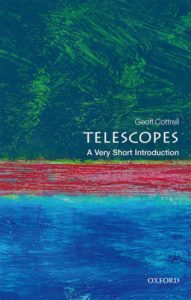 If someone was to ask me what inventions have played the greatest role in the advancement of natural history over the past few centuries, the telescope would very likely make the first position on the list. Not only has it made possible innumerable astronomical discoveries, it also led to the development of that most ubiquitous tool of field naturalists – the binocular.
If someone was to ask me what inventions have played the greatest role in the advancement of natural history over the past few centuries, the telescope would very likely make the first position on the list. Not only has it made possible innumerable astronomical discoveries, it also led to the development of that most ubiquitous tool of field naturalists – the binocular.
Of course, since it’s original invention, the telescope has developed into a variety of forms that allow perception of different portions of the electromagnetic spectrum – many of which are far beyond the range perceptible to our own rather limited unaided visual capabilities.
Which is why all naturalists, regardless of their particular areas of interest, should devote at least a little time to learning about the history of, as well as the uses for and science underlying, the telescope. And as with so many other subjects, Oxford University Press offers a particularly handy book for doing so: Geoffrey Cottrell‘s Telescopes; A Very Short Introduction.
In just over 100 pages, Dr. Cottrell presents a bit of the history of the telescope with an overview of how they – in their many classical and modern incarnations – function; truly relevant reading for any and all who rely on these instruments (or their “offspring”) in order to pursue their scientific passions.
It is also worth noting that Dr. Cottrell has another Very Short Introduction volume coming this April that should be a matter of great interest to all who are curious about “the stuff our universe is made of.”
